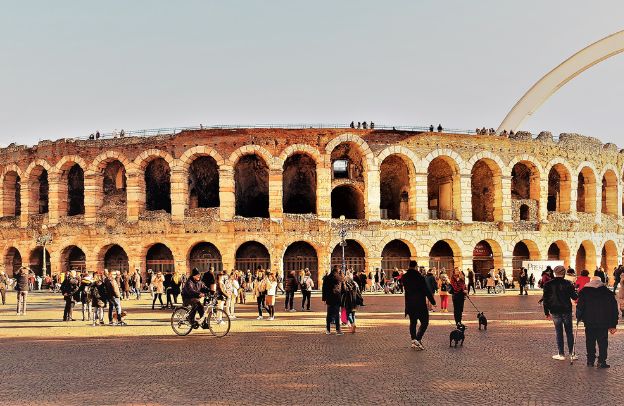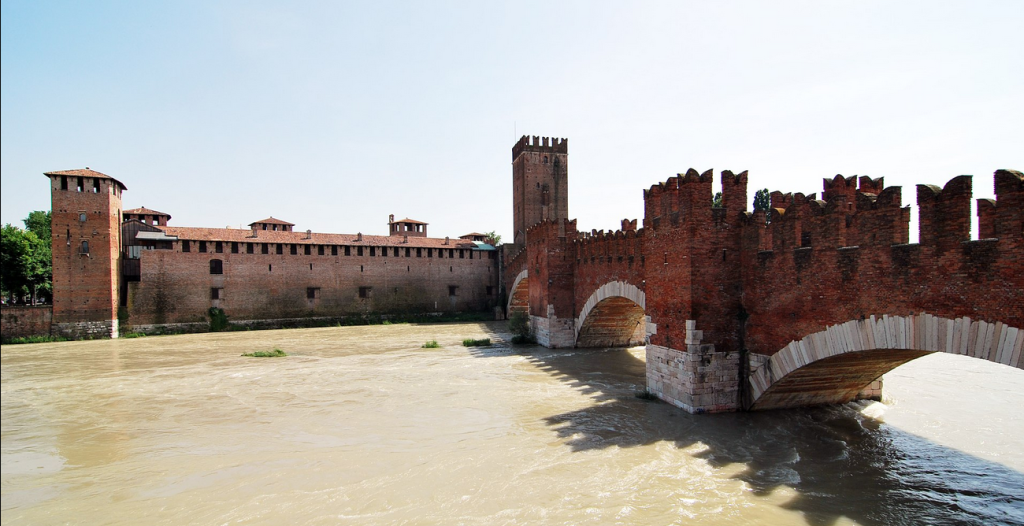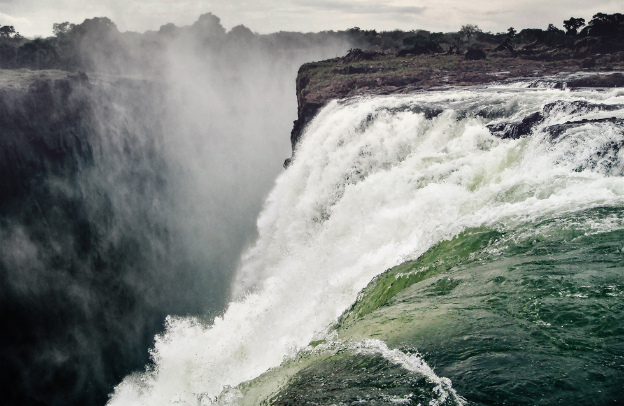Historic places to visit in Verona, Italy

Verona is a city in Italy that with key importance in the history and culture of Europe. From the time it played a significant role in the Roman empire, in 1405 when it became part of the Venetian Republic, and as a focus for cultural life in northern Italy during the Renaissance periods, the city of Verona has always been rich with history and charm. Get our free Travel Checklist
Do you want to learn more about Verona? Consider reading our first article on the Verona series: Verona Top Visits: History And Tourism In Verona, Italy
Today, we are going to be looking at some of the historical places to visit in Verona. The list goes on and on. Now, let’s look at a few of these historical places in Verona and what you can see by visiting them.
Arena of Verona

The Verona Arena was built by the emperor Augustus in 30 AD and is still in use today. It is internationally known as a platform for large-scale opera performances.
The Arena was built in the 3rd century B.C. and has been refurbished several times ever since. It is believed that it was used for gladiator-style games. The Arena is now a major tourist attraction with millions of visitors every year.
The Arena of Verona has been around for well over 2,000 years. It has been the centerpiece of many important moments in the city’s history and is still known to host some of the biggest spectacles today.
The Colosseum in Rome, on the other hand, is much larger than this Arena but does not hold any of the same historical significance.
While the arena of Verona was built in 30 AD, the Construction of the Rome Colosseum did not start until 70 AD.
The city of Verona is famous also for its historical connection to the Roman world. It’s by far one of the most preserved cities in the whole of Italy in terms of the roman leftovers.
If you heard of Verona being referred to as the “Little Rome“, it’s also for this reason – the preservation of Roman artifacts is abundant and intentional in the city of Verona.
How To Locate The Place
Arena of Verona is a walking distance from Verona central station, about 10 minutes by foot. You can also take one of the numerous buses to the city center, right in front of the train station.
You surely cannot miss your direction to Arena.
Juliet Balcony (Juliet house of Verona)
In one post, (Hidden Treasures – Juliet’s balcony in Verona) the writer wrote and I quote: “How many, upon seeing this small balcony, cannot fathom the romantic dialogue between the two lovers in the moonlight? To tell the truth, though, the balcony is a fake!”
To be sincere, I don’t think “truth” is what people are really looking for. It’s something else, “the feeling”. That is why thousands of people continue to visit the balcony of Juliet, every year.
What people do at the Juliet balcony
For good luck, many people like to cop a feel of the bronze statue of Juliet, specifically her right breast, which has resulted in it becoming the most beautiful part of the statue.
On a very serious note, some do even send mail to the Juliet of Verona and there is a local volunteer group of people who dedicate themselves to respond. I mean, they respond to the thousands of letters that are sent in annually from people who are desperately in need of romantic counsel.
Let me repeat, it’s about the feeling.
How To Locate The Place
Juliet’s house is very simple to locate. Take the city bus to the front of Arena and walk across the busy shopping center, (Via Giuseppe Mazzini” to the end and turn right at Via Cappello, to number 23.
If you are in a hurry to get to the house, you can remain on the bus across the arena and stop at San Fermo. Then walk across the road, towards the street by your left. The Juliet house, Via Cappello, 23 is about 2 minutes away from you.
Explore the history of Castelvecchio

Castelvecchio was once the citadel of Verona, and its complex of buildings was constructed in several phases over centuries. This history is reflected in the city’s architecture which is a fascinating mix of styles from Gothic, Renaissance, and Baroque.
The castle was built by order of Cangrande II della Scala in the middle of the fourteenth century.
It is built over Roman-style walls, which is something uncommon at this time. The Scaliger family, who were lords of Verona for over a century, were involved in these new construction projects.
The Castelvecchio Museum is a Renaissance-style building. It was built in the 14th century and originally had a more austere, fortress-like exterior.
It later became the city’s main town hall, but most of its buildings were demolished during World War II to make way for new development.
What you will find inside the Museum
The museum is rich in the cultural element to see as Themes & Itineraries:
The exhibition which has been curated by the Italian architect Carlo Scarpa is composed of many different thematic areas which are linked together through a carefully designed network.
If you are interested in following the route yourself, here are some important facts to know: it starts at Piazza della Salute and goes to Palazzo degli Uffici del Governo.
Middle age Sculpture:
The guided tour begins on the first floor of Veronese’s Castelvecchio Museum. The sculpture collection is in a series of rooms connected by arches. It displays beautiful works that show the evolution of Veronese’s sculpture from Romanesque to Renaissance.
Other things to see include:
- Scala family private courtyard
- Il Mastio
- Gothic Painting
- Cangrande’s Sword
- Medieval Jewels
- Pisanello and the Madonna of the Quail
- Early Renaissance
- Armors Collection and many more.
How To Locate The Place
To get to Castelvecchio, you can pick any of the following city buses from Verona central train station, numbers 21, 22, 23, 24, and stop at Castelvecchio.
On the alternative, you can walk there on foot, about 12 minutes from Verona central station.
If you are already by the city center, say by Arena, you can simply walk across the busy street (via Roma) and in two minutes, you are in Castelvecchio.
Verona Cathedral (Duomo di Verona)
Verona Cathedral is one of the most recognizable landmarks in the city. It is a Roman Catholic cathedral and the episcopal seat for the Diocese of Verona. Made of brick, it has three body vaults and a large bell tower on its west front that is 72 meters tall with a belfry that has five bells and stands at 84 meters above ground level.
This cathedral, known as the Duomo, is a large building in Verona’s city center. It is one of the largest cathedrals in Italy and it houses artifacts from the time it was built up to recent times.
There are many original features of Verona’s cathedral. It is made up of a 12th-century baptistery, the Cloister of the canons, the Church of Sant’Elena, and the remains of an early Christian basilica.
The location of the Cathedral of Verona has a history that spans thousands of years. It is believed that during Roman times there were villas with private spas and worship temples.
The first early Christian basilica was built in the same area where the church of Saint Elena now stands, it was consecrated by the bishop of Verona, San Zeno, who is also the patron saint of Verona city.
Timetables and prices of the Cathedral of Verona
The Duomo is open every weekday from 10.00 to 17.30 from March to October (while in July and August the closure takes place at 18.00). On holidays and Sundays, it is open from 13.30 to 17.30.
From November to February, you can visit it from 10.00 to 13.00 and from 13.30 to 17.00. On holidays it opens from 13.30 to 17.00. And the entrance costs € 2.50 per person.
How To Locate The Place
You can get to the Duomo of Verona from three main locations, depending on where you find yourself:
- 9 min (2.2 km) if you are in via Stradone S. Fermo,
- 10 min (2.8 km) if you are in via Lungadige Panvinio,
- And 11 min (3.5 km) if you are in via Corso Cavour.
Depending on where you are located within the Verona city center, getting to Verona Cathedral (Cattedrale di Santa Maria Matricolare) or Piazza Duomo, 21, is pretty easy.
Basilica of San Zeno Maggiore

The Basilica di San Zeno is a minor basilica of Verona, Northern Italy. It was constructed between 967 and 1398 AD. Its fame rests partly on its Romanesque architecture and partly upon the tradition that its crypt contains the remains of Juliet, who was killed by her own poisoned potion after consummating her love with Romeo.
San Zeno, according to the historical archive of Verona diocese, was the eighth bishop of Verona, from 362 to 380. The basilica that is dedicated to him is one of the masterpieces of Romanesque art in the whole of Italy.
In case you do not know, Saint Zeno, though one of the earliest bishops of Verona and currently the patron saint of the city, is actually an African, from Mauretania to be precise.
According to a Veronese author, notary of the 7th century by the name of Coronato, Zeno was a native of Mauretania. He taught many Africa children about the Catholic religion and he also helped them with their school work among other things.
Saint Zeno was born in 300 AD in Mauretania and he died on12 April, 371 in Verona.
For those who are wondering about the history of the abbey in Verona, it is believed that this monastery was founded around the year 700 AD by a group of Benedictine monks.
“The concept of the abbey,” said one source “has developed over many centuries from the early monastic ways of religious men and women where they would live isolated from the lay community about them.”
Many people typically associate religious life with monasteries. These monk-led institutions give those who join safe spiritual guidance & live together for extended periods.
An abbey is a home for these types of orders, but there are also open to visitors who come to stay & pray or attend religious festivals or events.
One interesting point to make about Abbey layouts is that most follow a set plan determined by the founding religious order.
Often, this plan is for features such as individual church and church “buildings”
Various emperors were said to have sojourned in the monastic community in Verona until it was decimated by the plague of 1630.
According to Verona.com, the monastery was suppressed by the Serenissima Republic in 1770.
“At the beginning of the nineteenth century, the devastation of the buildings of the former abbacy began, which were sold to private parties. In 1831 the last remnant of the abbacy building crumbled,” added the article, Basilica di San Zeno Maggiore, available at Verona.com
The San Zeno basilica, now a magnificent edifice in Verona, is the result of three key moments in history – built in the 9th century, restored between 1120 and 1138, and was enlarged during the 13th to 14th centuries.
What you will see in the San Zeno basilica
There are a lot of historic and religious relics to see in the San Zeno basilica of Verona. Apart from the tall bell tower pointing to the sky, you will also see the wooden portal which is lined with some 48 precious bronze forms, scenes from the Old and New Testaments, and the miracle of San Zeno.
There is a gigantic and rough Roman tomb on the wall of the basilica, which according to an inexact inscription contains the remains of King Pipin.
The interior of the basilica is pretty amazing. It has three-section, divided up by pillars and columns. A large octagonal baptismal fountain is seen on the right side.
Surely, there are so many historical and religious elements to see in the San Zeno basilica. Just be ready for more in your visit.
How To Locate The Place
Just like the cathedral, you can get to San Zeno basilica from three different locations, depending on where you find yourself:
- 6 min (2.2 km) if you are in Via Aurelio Saffi,
- 7 min (2.6 km) if you are in via Circonvallazione Maroncelli,
- And 8 min (2.7 km) if you are in via Corso Porta Nuova, Circonvallazione Oriani and Circonvallazione Maroncelli.
Knowing now that you have different possibilities, pick your preferred location and head on to San Zeno basilica (Basilica di San Zeno Maggiore), Piazza San Zeno, 2 and enjoy your time in the beautiful location.
Key takeaways from the top historic places to visit in Verona
In this article, we have seen some of the most important historical places to visit in Verona, Italy. These places provide insights into how the city has grown from its humble beginnings to where it is today as one of the most popular tourist destination in Italy.
The city of Verona is home to many architectural sites of importance. From the Basilica of San Zeno Maggiore to the Arena of Verona, there are a variety of stunning places to stop and see in the city.
We hope you enjoyed this list of top historic places to visit in Verona, Italy. We hope that you get to see these places for yourself and find out more about one of Europe’s most interesting cities to visit.
If you find any value in this post, share also with your friends who might need it. Get our Free Travel Checklist for your next trip.






